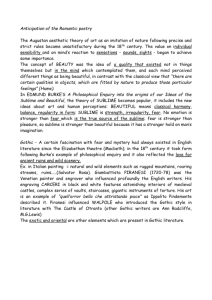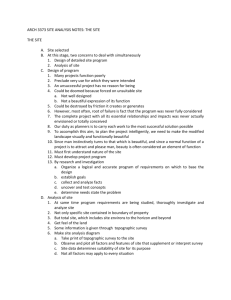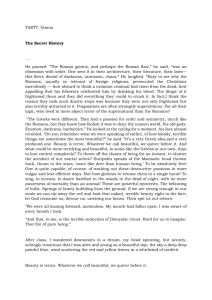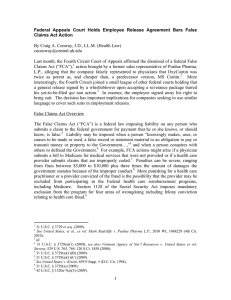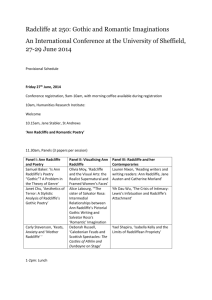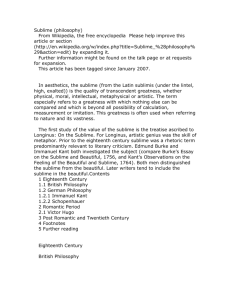Burkean Sublimity in Ann Radcliffe`s Gothic Work
advertisement
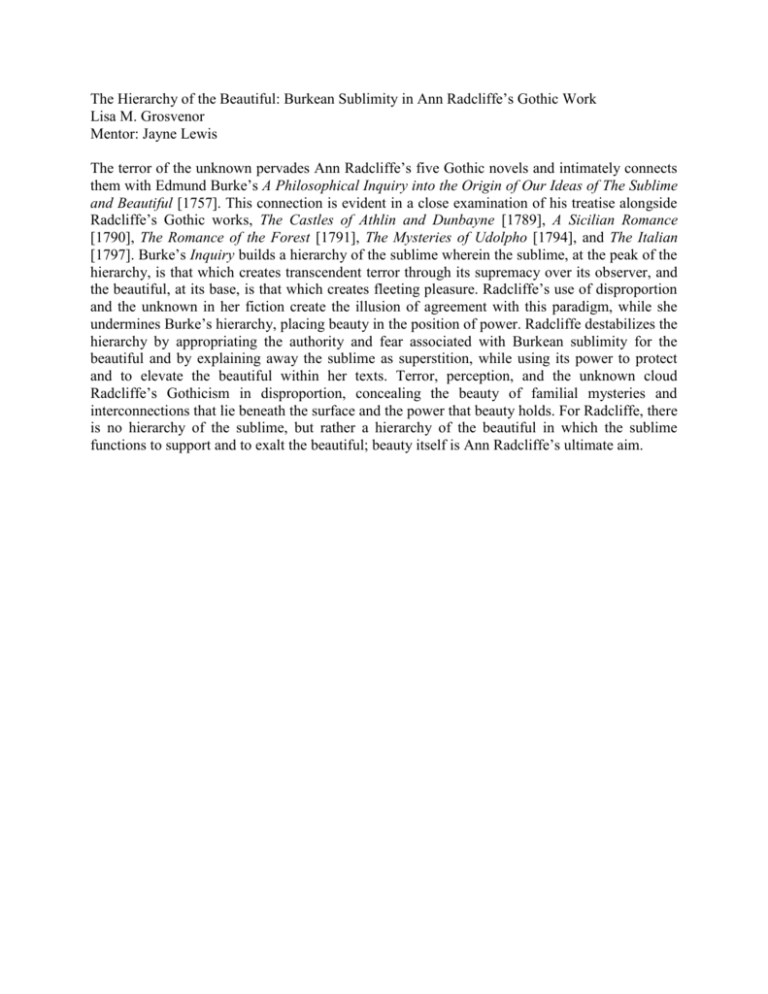
The Hierarchy of the Beautiful: Burkean Sublimity in Ann Radcliffe’s Gothic Work Lisa M. Grosvenor Mentor: Jayne Lewis The terror of the unknown pervades Ann Radcliffe’s five Gothic novels and intimately connects them with Edmund Burke’s A Philosophical Inquiry into the Origin of Our Ideas of The Sublime and Beautiful [1757]. This connection is evident in a close examination of his treatise alongside Radcliffe’s Gothic works, The Castles of Athlin and Dunbayne [1789], A Sicilian Romance [1790], The Romance of the Forest [1791], The Mysteries of Udolpho [1794], and The Italian [1797]. Burke’s Inquiry builds a hierarchy of the sublime wherein the sublime, at the peak of the hierarchy, is that which creates transcendent terror through its supremacy over its observer, and the beautiful, at its base, is that which creates fleeting pleasure. Radcliffe’s use of disproportion and the unknown in her fiction create the illusion of agreement with this paradigm, while she undermines Burke’s hierarchy, placing beauty in the position of power. Radcliffe destabilizes the hierarchy by appropriating the authority and fear associated with Burkean sublimity for the beautiful and by explaining away the sublime as superstition, while using its power to protect and to elevate the beautiful within her texts. Terror, perception, and the unknown cloud Radcliffe’s Gothicism in disproportion, concealing the beauty of familial mysteries and interconnections that lie beneath the surface and the power that beauty holds. For Radcliffe, there is no hierarchy of the sublime, but rather a hierarchy of the beautiful in which the sublime functions to support and to exalt the beautiful; beauty itself is Ann Radcliffe’s ultimate aim.
